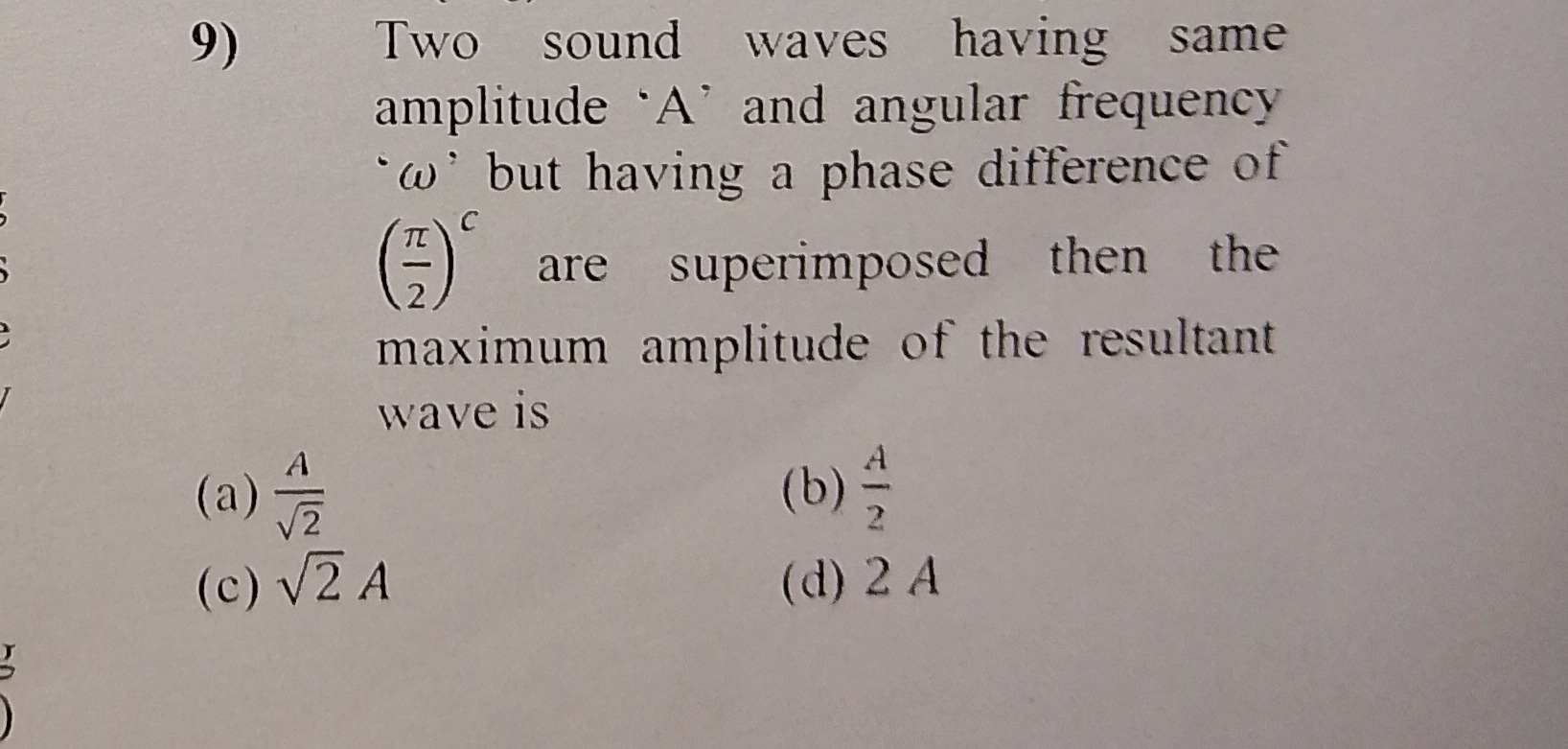Question
Question: Two sound waves having same amplitude 'A' and angular frequency '$\omega$' but having a phase differ...
Two sound waves having same amplitude 'A' and angular frequency 'ω' but having a phase difference of (2π)c are superimposed then the maximum amplitude of the resultant wave is

A
2A
B
2A
C
2A
D
2A
Answer
2A
Explanation
Solution
When two waves of amplitude A and phase difference 2π superimpose, the resultant amplitude R is given by
R=A2+A2+2A2cos(2π)Since cos(2π)=0,
R=2A2=2A.Thus, the maximum amplitude of the resultant wave is 2A.
